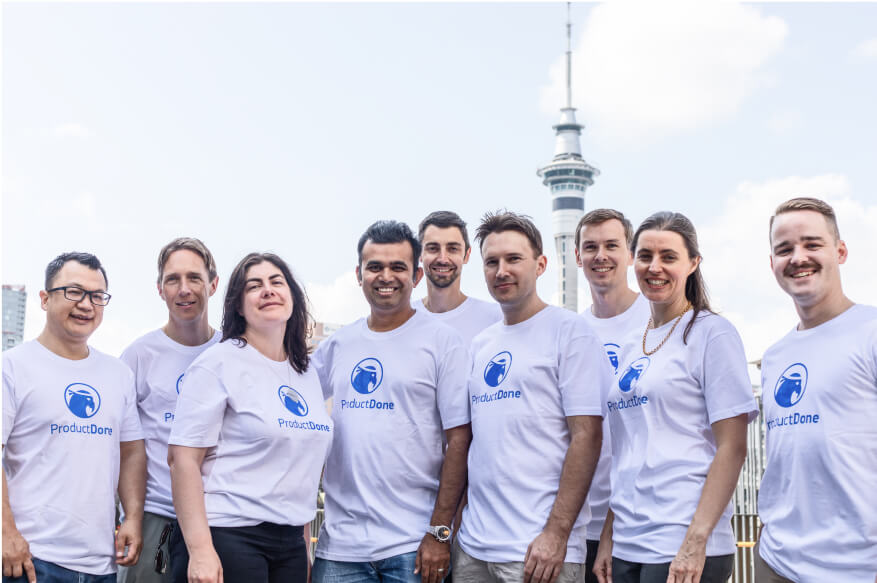Eric Ries made popular the idea of building a Minimum Viable Product (MVP) instead of building a proper product with all the features. A MVP is…
Is there a way to build your product without risking so much time and money?
Great question!
In 2011, Eric Ries wrote The Lean Startup. Now a must-read in the startup community, the book recognises the huge risks involved in building a startup, and explains a simple methodology to launch the first version of your product in a low risk, high reward fashion.
Instead of hiring expensive designers and software engineers and building a complete product that takes months or even years, the lean approach is to reduce your scope down to an initial MVP, a “minimum viable product”.
Take your idea and build the simplest version that your users will find valuable enough to use.
“Find a judo solution, one that delivers maximum efficiency with minimum effort.”
– Jason Fried, ReWork
Ask yourself:
- How could I build an MVP version of my product in a matter of days or weeks, instead of months?
- What core functionality could I focus on and leave all other possible features to a future version?
How simple should your MVP be?
How much should you reduce your idea down to?
The ideal length of time to launch an MVP is 6 weeks (30 working days) or less.
Intercom, Buffer and Basecamp are examples of companies that reduce all their internal projects and products down to things that can be shipped in six weeks or less. From there, they iterate and improve in future versions.
What can be built in 30 days or less?
In our book The 30 Day Startup (which, by the way, we wrote in under 4 weeks), we profile various startups that launched their product after spending less than 30 days building it.
Some products were built in a week.
Some were even finished in one weekend.
In all of these cases, the founders were tempted to take more time and add more features.
But the value of launching early and getting feedback from real customers is something no startup founder will regret.
And neither will you.
Here are just a Few Examples of Successful Startups that Built Functional MVP in 30 days or Less

Buffer took seven weeks to build the first version It now has an $18.6m annual run rate |

Egghead.io took two weeks to build the first version It now has a $3.3m annual run rate |

Baremetrics took seven days to build the first version It now has an $1.3m annual run rate |

Loot Crate took two days to build the first version It now has an $115m annual run rate |

ProductHunt took less than one day to build the first version It was acquired for $20M |

WP Curve took one week to build the first versio It was acquired by GoDaddy |

iDoneThis took two weeks to build the first version It now has a $7.6m annual run rate |

Proof took one weekend to build the first version It now has a $2m annual run rate |

Dollar Shave Club took six weeks* to build the first version The startup was acquired for $1B *Estimated, but no more than 12 weeks |
“The advice I always give [to help early stage founders] is to try and cut as much as possible out of the first version of the product. That way, when you launch, you’ll hopefully have fairly binary feedback: either people love that one feature, or they don’t find it useful. It’s easier to figure out what to build out from a single feature people love, than to launch with a bunch of things and figure out what is working and what isn’t.”
– Joel Gascoigne, Founder of Buffer
What if your product really can’t be built in 30 days?
Sometimes it’s not possible to build a fully functioning MVP in six weeks or less.
Maybe the problem you’re solving is too complex? Or maybe you don’t have the skills/resources to build it yourself?
But remember, the purpose of an MVP is to validate your product idea and find out the potential market for it. This doesn’t mean you need to build a working product as your MVP.
Here are some of the ways successful startups have launched without building a working product:
The Landing Page MVP
Dropbox is a hugely successful startup valued at $9.7B.
It’s a product that solved a real issue, but how do you build a functional MVP for a product that needs to work perfectly?
“While you want to launch fast and iterate, people don’t like that if you’re doing that with their wedding photos or their tax returns.”
– Drew Houston, Founder of Dropbox
Instead of risking millions on an untested idea, Drew Houston, the founder of Dropbox, decided to build a Landing Page MVP instead.
He created a screencast video of how Dropbox worked, added it to a web page, with an email form below the video for people to register their interest.
Concierge MVP

Food on the Table is a mobile app that was acquired by Food Network in 2014. It gathers food preferences and then suggests recipes and grocery stores with the best deals to help you cook tasty and cheap dishes.
When Manuel Rosso founded the company he wanted to check if his business would work before building the app.
What he ended up doing, is manually interviewing people, finding out their preferences and budgets, and then manually compiled shopping lists based on current specials in stores.
Only once he’d refined his process and had satisfied users did he end up developing it into an app.
Wizard of Oz MVP


Airbnb and Zappos are massively successful startups that had remarkably simple MVP’s in the beginning.
Airbnb tested out their assumptions by building a website and selling beds (air mattresses) in their own house.
Zappos tested out whether online shoe shopping would work by cutting a deal with a local shoe store. All orders were fulfilled by simply purchasing shoes directly from the retail after an order was made.
The front end is complete software based (website or mobile app), but behind the scenes everything is being done by humans.
In a previous blog post we’ve also written about Doordash which is another great example of a concierge MVP.
Email MVP
![]()
Product Hunt is a popular website where people find, share and discuss new tech products and startups. When Ryan Hoover came up with the idea, he wanted to test the demand for such a website before spending time building it.
He did this by starting with nothing more than an email list. He invited contributors and people could share links and discover new ones by subscribing to the email.
Piecemeal MVP

Startup ideas are usually creating something entirely new. Often the best way to validate your product idea is to replicate it using a combination of MVP styles.
When Andrew Mason founded Groupon, he started with a WordPress blog, where he’d post new blog posts of restaurant deals. If enough people showed interest in a deal, he generated coupons as PDF documents using AppleScript and emailed them via Apple Mail.
It’s up to you. How are you going to get your MVP built?
“It’s not about ideas. It’s about making ideas happen.”
– Scott Belsky, Co-founder of Behance
What MVP approach can you use to get your product idea live?




